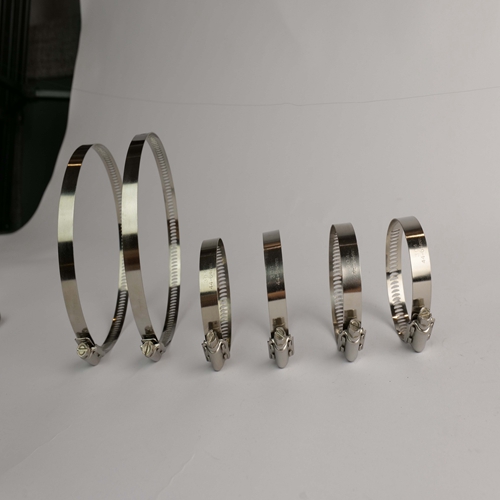- Phone:+86-17331948172 +86-0319-8862898
- E-mail: inquiry@puxingclamp.com
Nov . 28, 2024 03:08 Back to list
Bulk Suppliers of High-Quality Hose Clamps for Various Applications and Industries
The Importance of Bulk Hose Clamps in Industrial Applications
In various industrial applications, ensuring the integrity and reliability of connections is paramount. One of the most crucial components in this regard is the hose clamp. When discussing the significance of hose clamps, particularly in bulk manufacturing, it becomes evident that these small devices play a large role in maintaining operational efficiency. This article will explore the various aspects of bulk hose clamps, including their types, manufacturing processes, applications, and the benefits of sourcing them from reputable manufacturers.
What are Hose Clamps?
Hose clamps are mechanical devices used to secure hoses over fittings or pipes. They work by exerting a compressive force around the hose, ensuring that it remains attached to the fitting without leaking or disconnecting. While they may appear to be simple components, their quality and design can significantly impact the performance of a system.
Types of Hose Clamps
Hose clamps come in various types, each designed for specific applications. Some of the most common types include
1. Screw Hose Clamps These are the most widely used type and consist of a band with a screw mechanism that tightens the clamp around the hose. They are versatile and can be used in numerous applications, from automotive to plumbing.
2. Spring Hose Clamps These clamps use a spring mechanism to exert pressure on the hose. They are often used in applications where there may be vibrations or movements that could loosen other types of clamps.
3. Worm Gear Clamps A popular choice in industries requiring a secure and adjustable fitting, these clamps feature a worm gear that allows for precise tightening. They are suitable for high-pressure applications.
4. CV Cord Clamps These are specifically designed for securing hose connections in vacuum applications. They provide consistent gripping force and are effective at preventing leaks.
The Manufacturing Process
Bulk manufacturers of hose clamps typically employ advanced manufacturing techniques to ensure high-quality products. The process generally involves several critical steps
1. Material Selection High-grade materials such as stainless steel, carbon steel, or zinc-plated steel are chosen for their strength and resistance to corrosion.
hose clamps bulk manufacturers

2. Cutting and Shaping The raw materials are cut into specific lengths and then shaped into bands. Precision cutting ensures that each clamp meets required dimensions.
3. Forming and Welding The bands are then formed into loops, and in some cases, welded together to create a strong bond.
4. Plating and Coating To enhance corrosion resistance and durability, the clamps may undergo a plating process. This is particularly important for applications exposed to moisture and harsh conditions.
5. Quality Control Reputable manufacturers implement strict quality control measures to inspect each batch of clamps for functionality, durability, and safety. This ensures that only the highest standards are met before the clamps reach the market.
Benefits of Sourcing Bulk Hose Clamps from Manufacturers
Purchasing bulk hose clamps from established manufacturers offers numerous advantages
1. Cost Efficiency Buying in bulk typically reduces the unit cost, making it an economical choice for businesses that require large quantities.
2. Consistency and Reliability Reputable manufacturers produce consistent quality products that meet industry standards, ensuring that each clamp is reliable.
3. Customization Options Many manufacturers offer customization services that allow businesses to order clamps tailored to specific requirements, including size, material, and design.
4. Rapid Supply Bulk manufacturers often have extensive inventory and can fulfill orders quickly, which is crucial for businesses that depend on timely delivery.
5. Technical Support Established manufacturers usually provide technical support and guidance, helping businesses choose the right clamps for their needs.
Conclusion
In conclusion, bulk hose clamps are vital components in various industries, ensuring the secure connection of hoses to fittings and preventing leaks. Understanding the different types, manufacturing processes, and the advantages of sourcing from reputable manufacturers can significantly impact operational success. As industries continue to evolve, the demand for high-quality hose clamps will remain critical, making it essential for businesses to prioritize their sourcing decisions. By investing in reliable hose clamps, companies can enhance their efficiency, safety, and overall performance.
-
German Style Hose Clamp Manufacturer Quick Lock Worm Gear Hose Clamp Supplier
NewsJul.04,2025
-
Steel Midsole with Stainless Steel – Durable, Lightweight Safety Solutions from Top Factories and Suppliers
NewsJun.24,2025
-
High-Quality Stainless Steel Midsoles in EN Standard – Reliable Factories & Suppliers
NewsJun.10,2025
-
High-Quality Steel Midsole Stainless Steel Factory & Suppliers Durable Safety Solutions
NewsJun.10,2025
-
Steel Plate Midsole Durable Support for Footwear Applications
NewsJun.10,2025
-
Top Tube Clamp Manufacturers Durable Pipe & Hose Solutions
NewsJun.10,2025




